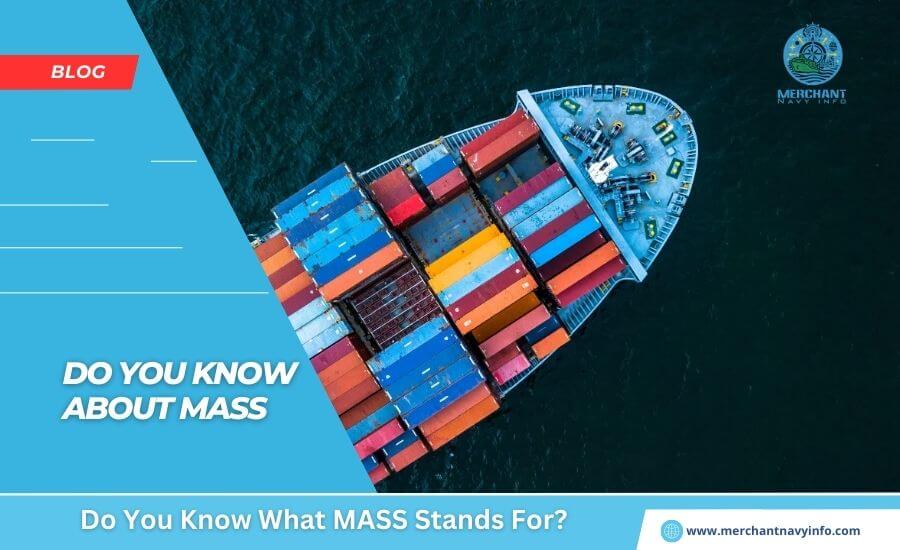
The International Maritime Organization (IMO) defines a “Maritime Autonomous Surface Ship (MASS)”. It is a vessel that can operate to some extent without human interaction. These autonomous ships represent a significant advancement in maritime transportation. They can potentially revolutionize the shipping industry in several ways.
Advantages of MASS
One key advantage of a MASS is its potential to improve safety in maritime operations. By removing the need for human crew members, these ships can eliminate the risks associated with human error and fatigue, leading to fewer accidents and improved overall safety standards.
MASS (Maritime Autonomous Surface Ship) technology has the potential to greatly reduce the number of lost lives in adverse weather and maritime security issues, such as piracy attacks. Furthermore, MASS vessels can significantly lower operational costs as they do not require crew amenities or accommodations, making them more cost-effective and efficient than traditional human-crewed vessels.
Levels of autonomy
The degrees of autonomy identified for the scoping, according to the IMO:
- The first degree of automation involves a ship that has automated processes and decision support. While seafarers are still on board, their main role is operating and controlling the ship’s systems and functions. The ship may have some automated and occasionally unsupervised operations, but the seafarers are always present and ready to take control when necessary.
- A ship with seafarers aboard can be remotely controlled in degree two. The ship’s functions and systems are controlled and operated from a different location. Seafarers are on the ship to take charge and operate its systems and functions.
- The third level entails a remotely controlled ship without any seafarers on board. The operation and control of the ship are done from a different location.
- The fourth degree pertains to a completely autonomous ship. The ship’s operating system can make decisions and take actions as needed.
Regulatory and safety issues
As mentioned, autonomous ships offer considerable benefits such as safety, efficiency, and improved operation. However, as a novel presence in the global maritime industry, they face significant cybersecurity and safety concerns.
Developing reliable autonomous systems and sensors for navigation and collision avoidance, ensuring secure communication, data exchange, and robust cybersecurity measures are critical challenges regulating MASS. IMO initiated a regulatory scoping exercise in 2017 to address these issues.
The exercise concluded in 2021 and aimed to address high-priority issues related to maritime conventions such as SOLAS, STCW, and COLREGs.
IMO then concluded that high-priority issues needed to be addressed, including developing MASS terminology, functional requirements of remote-control stations, revision of provisions for manual operations, watchkeeping, search and rescue, and information requirements for safe operation.
In December 2021, the Legal Committee (LEG) acknowledged that existing international conventions could allow Maritime Autonomous Surface Ships (MASS) operation. However, some interpretations or amendments may be necessary to address certain issues, such as the role and responsibility of the remote operator or master, questions about liability, causation, and certification requirements.
The IMO’s Maritime Safety Committee made progress on developing a non-mandatory goal-based instrument regulating MASS operations, which is expected to be adopted by 2025. STCW applies to seafarers on MASS but not remote operators and masters at ROC. The new MASS Code must address all training, certification, and competency requirements.
MASS in action
Yara Birkeland is the world’s most well-known autonomous ship, resulting from a collaborative effort between Norwegian company Yara International ASA and several other firms. In the spring of 2022, the Porsgrunn region witnessed the commercial launch of the self-sufficient vessel Yara Birkeland. Yara International ASA stated that the ship will gradually become more independent of human control during its first two years of operation. Additionally, from February 26 to March 1, 2022, the Designing the Future of Full Autonomous Ship (DFFAS) consortium carried out a successful trial, simulating a fully self-sufficient ship’s actual operation by directing the vessel to sail approximately 790 kilometres between Tokyo Bay and Ise Bay.
You can watch the DFFAS consortium’s efforts over one and a half years to realize a fully autonomous ship in the documentary below:
Earlier this year, Samsung Heavy Industries demonstrated autonomous vessel navigation from South Korea to Taiwan. The demonstration covered 1,500 km from Geoje, South Kyungsang Province, to Jeju Island and Kaohsiung Port.
Finally, in late May, Kongsberg Maritime completed the autonomous operation of Eidsvaag Pioneer, a coastal cargo ship, in Norway.
Where we stand
Maritime autonomous surface ships pose an opportunity for more efficient and safer shipping. Seafarers can benefit from automation and have more time onboard, especially during low manning levels.
Autonomous vessels can reduce human error and increase operational efficiency. They can also navigate challenging weather conditions and remote areas, making shipping more reliable and cost-effective.
However, there are still obstacles to overcome, such as regulatory frameworks, cybersecurity concerns and proper training to ensure high safety standards.
Finally, integrating autonomous vessels into existing maritime infrastructure may require important technological and infrastructure upgrade investments.









